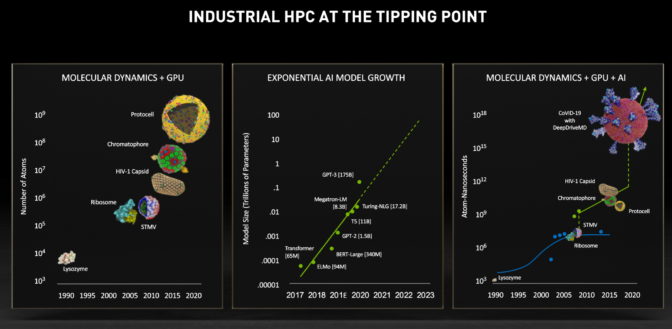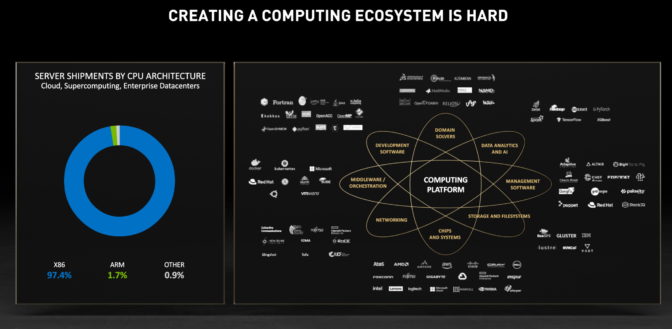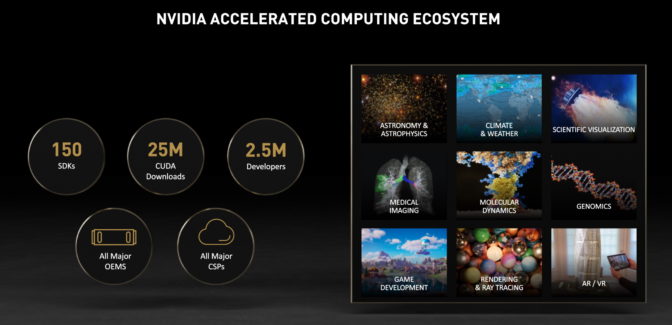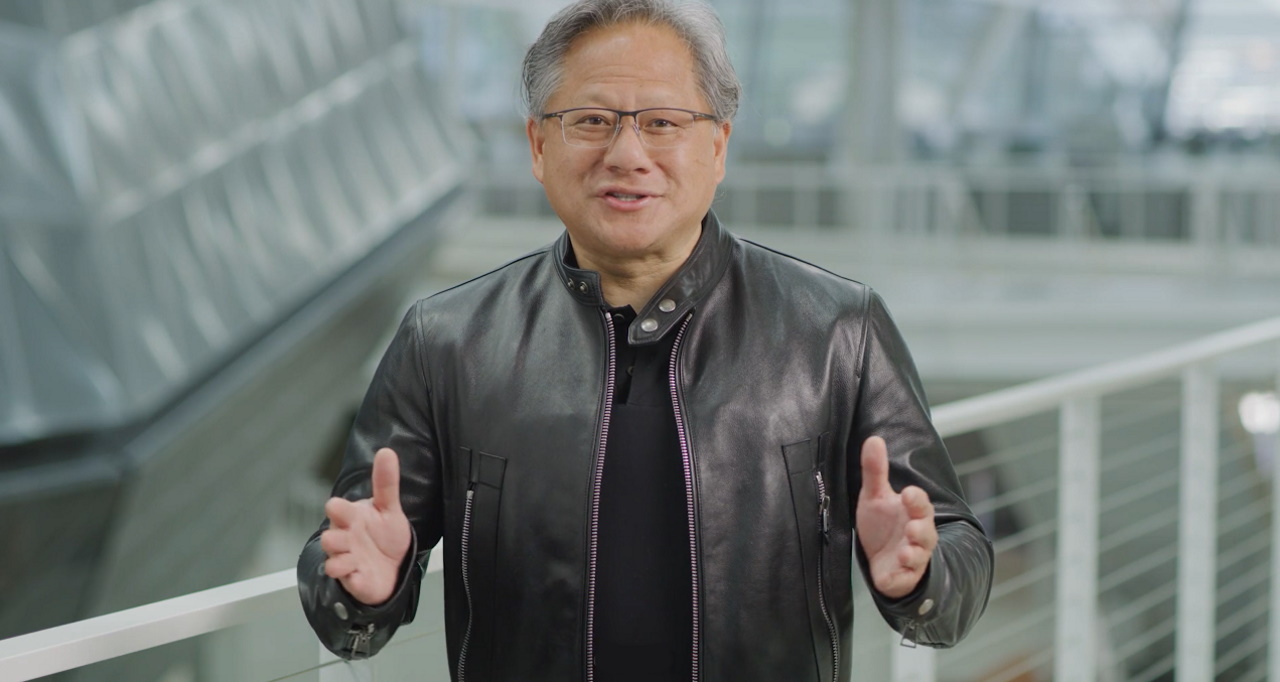“A confluence of advances has put us at the beginnings of the industrial HPC revolution,” said Jensen Huang.
In a short talk viewable below, NVIDIA’s CEO described to a gathering of high performance computing specialists in Europe the genesis and outlook for the most powerful technology trend of our lifetimes.
High performance computing is experiencing a domino effect that began decades ago with simulations, often in academic research centers. The lab efforts caught the attention of industries from aerospace to healthcare, but they found them impractical for the kinds of mega-calculations they required — until the advent of accelerated computing and deep learning.
Driven by these two tech forces, the dominoes are falling and fanning out everywhere.
“When we hear about the digital biology revolution, or the future factory revolution, or the digital twin revolution, the same fundamental dynamics are at play,” Huang said in his address to the Teratec event in France.
Domino Effect Delivers Super-Exponential Growth
Simple arithmetic describes this domino effect: HPC + accelerated computing + deep learning.
An example drawn from science’s recent fight against COVID-19 shows the power of that equation.

For decades, scientists tried to simulate how atoms interact, work that’s critical to advance chemistry and find better drugs. The problem was achieving the scale needed to observe complex biological mechanisms in action.
For example, one team hit a milestone in 2016, modeling a million atoms for 20 nanoseconds using GPU acceleration. Armed with both GPUs and deep learning, a team last year led by UCSD researcher Rommie Amaro showed how a healthy cell gets infected with COVID-19, pushing the limits with a simulation on the Summit supercomputer of 305 million atoms over a full millisecond.
That’s over a 10-million-fold increase in just 15 years. Huang calls it a super-exponential, super-Moore’s law advance.
Meaningful Insights for Every Industry
The numbers are staggering. Even more amazing is that simulation helped researchers see for the first time the intricate mechanism of how the COVID-19 spike protein infects a healthy cell.
It’s the kind of transformative insight every industry wants. So, business leaders are beginning to harness the same technology forces Amaro’s team and many other scientists pioneered.
Pharmaceutical companies are using GPU-accelerated simulation and AI to speed the process of drug discovery. Car makers like BMW are using it to model entire factories. Europe’s DestinE project will create a digital twin of Planet Earth, a simulation only possible with the combined forces of HPC and AI.

Simulations already touch our lives today in many ways. For example, internet services use recommendation systems to learn what we love to buy, read and watch. Recommendation systems are really simulations of human preferences with patterns drawn from billions of data points encompassing hundreds of traits for each product and customer.
For its part, NVIDIA has created what Huang called a “simulation culture.”
Early on, we built an infrastructure that ensures with simulations that complex designs like the NVIDIA A100 Tensor Core GPU, powered by tens of billions of transistors, are ready for volume manufacturing from their first iteration. By contrast, many chip makers use a long and costly trial-and-error process, fabricating multiple designs until they get the details right.
Arming for a Revolution
The industrial HPC revolution will sweep through data centers, public and hybrid clouds and edge networks. “The diversity of applications and system bottlenecks will drive diversity of system architectures … and this is the beauty of Arm,” Huang said, referring to the company NVIDIA announced plans to buy last September.
Arm’s open, customizable processor architecture already enables:
- Amazon Graviton for cloud computing
- Ampere Computing’s Altra processor
- Marvell chips for storage servers and 5G base stations
- Japan’s Fugaku supercomputer based on a Fujitsu processor
- SiPearl, a CPU for a European exascale system, and
- NVIDIA Grace, a CPU tailored for large data problems like AI
The leader in mobile and embedded systems, Arm still needs to climb a big hill to build out a robust HPC ecosystem.

“We believe the time has come for the Arm model in HPC,” Huang said. “NVIDIA can jump-start the Arm HPC ecosystem,” he added, noting our 2.5 million developers and their 25 million downloads of CUDA accelerated-computing software.

The combination of NVIDIA and Arm will further accelerate the growth of the HPC ecosystem and the industrial HPC revolution that’s just getting started.
“The question for industry is no longer, what can computers do?” he concluded. “The question is who will use it first to revolutionize their industry.”
You can listen to Huang’s full talk below.
To learn more, tune into the NVIDIA ISC 2021 Special Address Monday, June 28 at 9:30am PT. You’ll get an in-depth overview of the latest news from NVIDIA’s Marc Hamilton, followed by a live Q&A panel with NVIDIA HPC experts.
